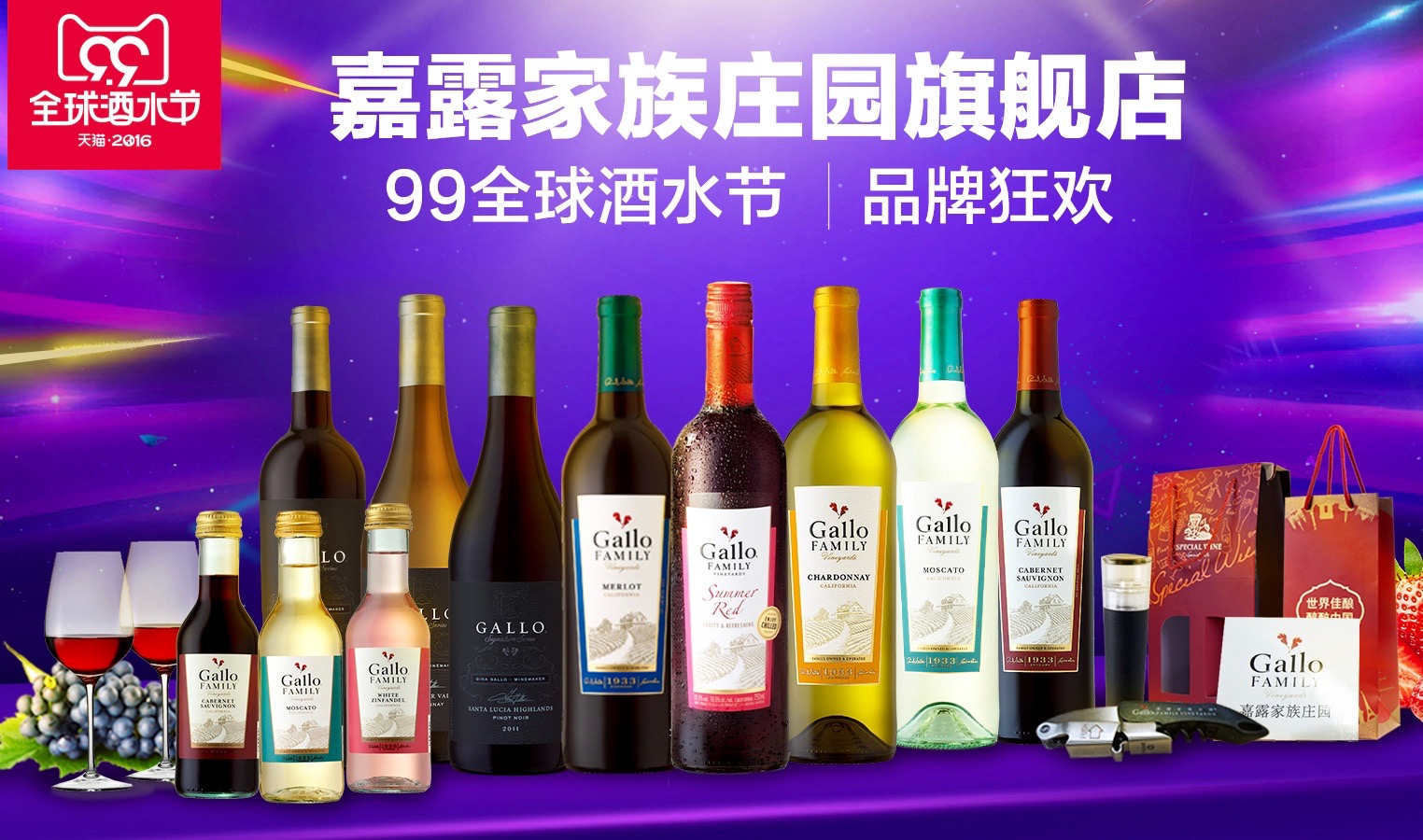
With the popularity of imported wines on the rise in China, overseas brands are looking for ways to both establish and grow their footprints in the country. Perhaps unsurprisingly given the dominant role e-commerce has among Chinese consumers, international winemakers are taking their sales pitch online. One player in the space, Gallo Family Vineyards, a U.S. brand based in Napa Valley, California, has been selling through Alibaba Group’s Tmall.com. The B2C marketplace gives Gallo a way to reach wine aficionados in China that it otherwise couldn’t through bricks-and-mortar stores, the company says.
We talked to Jon French, Gallo’s vice president and general manager of Asia, about how the company is using Alibaba’s e-commerce platform to grow its brand presence in China andhow different wine-drinking trends are driving sales in a market that still has plenty of room to grow. Here’s what he had to say:
Can you talk about the different wine-drinking demographics in China? We’d like to hear about the shift from the wealthy elite to the middle class and, perhaps, those in the post-’90s generation.
The emerging middle class in China continues to grow, and they have an affinity for luxury goods and lifestyle products. Wine is viewed as an aspirational luxury product and is now in the consideration set of younger, fashionable consumers.
According to research partners Wine Intelligence, women and men consumers are a nearly equally split, skewing slightly more male at 52 percent. A key change is the younger age of new consumers coming into the wine-drinking demographic. China has a strong connection with California as both an aspirational and inspirational place and now links that with our world-class wine producing region.
How is this shift in the customer base changing the types of wines being sold and pitched to China? What wines are popular among these different demographics?
Awareness levels for California as a wine-producing region have increased significantly over the past five years to nearly 60 percent now.
Red wines are still very dominant, and about 90 percent of imported wine sold in China is red. The market has evolved to include great representation in the middle range as well. California performs very well in this segment, delivering high quality and diversity at all price points.
Branding is very important in China, and there are now a variety of middle-priced wines from regions like California. Wines like Carlo Rossi Cabernet Sauvignon from California do particularly well. Our wines tend to be fruit forward and food friendly, and they pair very well with Chinese cuisine. The concept of food and wine pairing is still a relatively new one in China, and California wines are leading the way because of their approachability and versatility.
Younger wine consumers are more adventurous with their wine choices. They are more willing to try other non-traditional varietals, like Moscato, Pinot Noir and Zinfandel.
Has this followed a particular trend? (For example, sauvignon blanc is popular because‚Ķ? Merlot might be popular because‚Ķ?) In addition to knowing what’s popular, we’d also like to know why it’s popular.
In addition to China’s affinity for California’s popular red wines, California’s white wines such as Gallo Family Vineyards Chardonnay and Carlo Rossi White also pair particularly well with Chinese cuisine. California white wine is a real opportunity as a category.
China’s large domestic wine production accounts for approximately 85 percentage of wine consumed within the country. These domestic brands offer an opportunity for consumers to “trade up” to imported wine brands, and California has benefitted from this evolution.
Is there a rural component to selling in China? Or a third- or fourth-tier city market? Or is the market based squarely in the urban centers of Beijing and Shanghai still?
The largest consumer base for imported wines continues to be the high-tier cities, such as Shanghai and Beijing. We are seeing continued category growth in secondary markets as well. With this growth, there is a significant opportunity with consumers who are willing to try a more diverse portfolio of imported wines. The market development is still in its early stages, but we look forward to the future promise of business in these markets.
At Gallo, we invest heavily in building relationships in all areas and work closely with our partners to ensure we have the best possible distribution of our Carlo Rossi, Gallo Family Vineyards and Gallo Signature Series wines.
What are the things that make China a unique wine market relative to other countries you sell to?
China has a very large population with considerable opportunity for education and growth in all categories of wine. With the rapid pace of market change—the rise of sommeliers, media and overall knowledge levels—there is an increase in “thirst” for wine education and differentiated options from around the world. The methods through which wine is sold in China continue to evolve quickly, especially e-commerce platforms such as Tmall.
What unique challenges does China present to international wine sellers such as Gallo?
China is a large market, and its size presents many logistical challenges. There are also cultural differences like taste profiles, wine types and consumer preferences. We also face challenges with the foreign exchange rate, economic slowdowns and fragmented distribution, so we continue to work closely with our partners.
How does selling through Tmall help the company overcome those challenges?
E-commerce in China is ahead of most other developed markets in the world, and Tmall is clearly a leader in this space. The diversity and range of wines on Tmall surpasses traditional distribution methods, allowing consumers the ability to purchase products anytime, anywhere online. Shoppers have greater access to information and reviews, instilling a higher trust on the quality of products sold. Tmall also gives us an opportunity to expand our reach, both geographically and to younger consumers and influencers, allowing us to more quickly capitalize on market trends. Products purchased through Tmall are also more likely to be perceived as a good value for the price, a tenet that we take pride in at Gallo.
What are your plans for the 9.9 Wine Festival? How will you use the event to further generate sales and increase your customer reach?
We are very excited for the 9.9 Wine Festival as it brings the opportunity to acquire and engage new consumers and raise awareness of our brands through flash sales and special promotional platforms. We look forward to the opportunity to interact with current consumers and start an ongoing conversation with new consumers through our video broadcasts.




